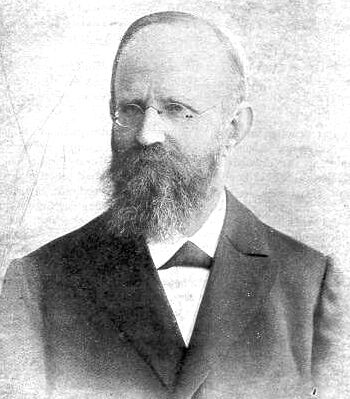<Back to Index>
- Geodesist Friedrich Robert Helmert, 1843
PAGE SPONSOR

Friedrich Robert Helmert (July 31, 1843 – June 15, 1917) was a German geodesist and an important writer on the theory of errors.
Helmert was born in Freiberg, Kingdom of Saxony. After schooling in Freiberg and Dresden, he entered the Polytechnische Schule, now Technische Universität, in Dresden to study engineering science in 1859. Finding him especially enthusiastic about geodesy, one of his teachers, August Nagel, hired him while still a student to work on the triangulation of the Erzgebirge and the drafting of the trigonometric network for Saxony. In 1863 Helmert became Nagel's assistant on the Central European Arc Measurement. After a year's study of mathematics and astronomy, Helmert obtained his doctor's degree from the University of Leipzig in 1867 for a thesis based on his work for Nagel.
In 1870 Helmert became instructor and in 1872 professor at RWTH Aachen, the new Technical University in Aachen. At Aachen he wrote Die mathematischen und physikalischen Theorieen der höheren Geodäsie (Part I was published in 1880 and Part II in 1884). This work laid the foundations of modern geodesy.
The method of least squares had been introduced into geodesy by Gauss and Helmert wrote a fine book on least squares (1872, with a second edition in 1907) in this tradition. Hald gives this assessment: "[It] is a pedagogical masterpiece; it became a standard text until it was superseded by expositions using matrix algebra." In 1876 Helmert published an article deriving the distribution of the sample variance for a normal population. The work was described in German textbooks, including his own, but the English statisticians 'Student' and Fisher did not know of it and re-derived the distribution.
From 1887 Helmert was professor of advanced geodesy at the University of Berlin and director of the Geodetic Institute. In 1916 he had a stroke and died of its effects the following year in Potsdam.
Helmert received many honors. He was president of the global geodetic association of "Internationale Erdmessung", member of the Prussian Academy of Sciences in Berlin, was elected a member of the Royal Swedish Academy of Sciences in 1905, and recipient of some 25 German and foreign decorations.